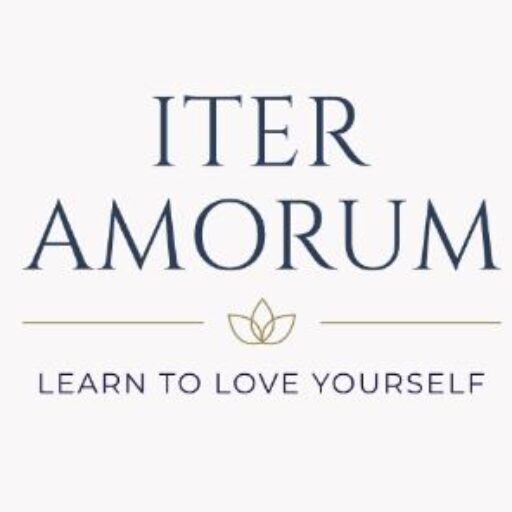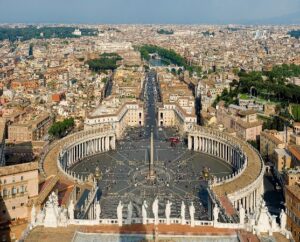Published on September 27, 2024
INTRODUCTION
Ymir – the first living creature, a giant that appeared in Ginnungagap, filling the gap with the primordial void, created while sleeping the proto-humans, a man and a woman, who grew under his left arm, both of them simultaneously without any significant difference. (Ellis H R, 1981, p. 27)
By comparison, this image stands out without any doubt as a staple for the idea of equality of genders. If we move the focus to the picture of Adam and Eve, as they were pictured in the Book of Genesis of the Holy Bible, we can see that the gender problem was something humanity was based on.
To be more concrete, we need to highlight that Eve was created after Adam, some sources say from his rib – but this is still an arguable subject.
The Pentateuch stipulates that the inception of humanity is based on an unbalanced relation that places the concept of the woman under or slightly in another position than the place of the first human being, Adam.
To an extent, we can say that in Norse mythology, gender issue supports no distinction comporting a depiction of impartiality that can be observed in religion and society as well. We need to point out that the concept of religion and power were interconnected during the Viking Age.
The feeling of rightness regarding the subject of gender in the Old Norse world can be noticed in the structure of the myth about the luminaries – the Sun is presented as female and the Moon is seen as male. This image is in complete opposition to what Islamic and Christian folklore are showing – the Moon is always the symbol of the woman (for this, see the book One Thousand and One Nights – the collection of Islamic legends).
From the perspective of power and gender, this paper will focus on the religion and society of the Viking Age, trying to notice the particularities of these issues and offering concrete examples.
RESULTS
The general idea about the Old Norse society is that it was ruled by warriors and male leaders who left no place for women and who built their communities on barbaric habits.
We can treat this image as pure fiction now, but we need to acknowledge the fact that women did not participate in wars, rapes, and robberies. But, understandably, all these fierce male figures had women in their houses as mothers, sisters, and wives (Jesch, 1991, pp. 1-2) who were active partners in the public and private life in their society.
To have an image of how gender and power functioned during the Viking Age, we will offer some historical and literary examples, which support the assumption that Old Norse society was somehow based on equilibrium regarding the concepts of men, and women and how they used the power.
Therefore, Olof Sundqvist (2002, p. 263) depicts in his research the image of a slave woman who was killed and buried with her master. This historical fact can be interpreted as a recognition of the male’s position, but, at the same time, as a confirmation of the humility of the woman and the lack of her strength regarding social place.
Though women in power are not usually depicted in historical sources regarding the Old Norse world, there are some pieces of evidence dating from the Viking Age that show the image of women’s leadership.
For example, Hassmyra inscription, Västmanland, indicates the presence of a noblewoman (Olof Sundqvist, 2002, p. 79); there are some poems that are dedicated as a panegyric to worthy women (idem, 2002, p. 80); other sources support the idea that women acted as peace weavers during some important conflicts (idem, 2002, p. 80); antique historians as Dio Cassius and Tacitus wrote about women who sat as high priestess in their communities (idem, 2002, p 82); and graves stand as concrete proof for the fact that women occupied important positions in society (idem, 2002, p. 83).
The above examples are evident historical facts showing that women were in high positions. They were able to change the course of the events and imposed rules.
There is a piece of iconographic evidence from Eastern Scandinavia that shows a woman who is giving a drinking horn to a dead man while welcoming him entering to Valhalla. (Olof Sundqvist, 2002, p. 265)
These are historical pieces of evidence come to support the statement that in Old Norse society, power, in all kinds of its form, did not belong exclusively to men, but women were an active part of their world.
Literary examples from mythology also support the idea that power was a general rule and that access to it was open to all, no matter gender.
In God’s world, nearby the river of fate were located the three maidens called the Norns. They were Urdr (Fate), Verdandi (Being), and Skuld (Necessity). Maidens are the symbol of purity, and they were untouched by a man’s hand. This is not an accident that these three most important features of humanity are imagined as female figures and not as males. This can be considered an image of women’s power in a man’s world, such as in the Viking religion.
The Other World is as well ruled by women, Freyja and Hel are the goddesses who share with Odin the leadership of the world of the dead. The worthy ones, who died in battle, go to Odin’s hall Valhalla, and the other worthy ones go to Freyja’s hall Fólkvangr. For Hel, Loki’s daughter, there is a third share of the dead’s world. We can conclude that the Other World is ruled by female figures, and the connection between this afterlife realm and the real one is realized by women as well.
From the perspective of religion, this is an illustration of women’s power and the way they ruled the Other World. Interesting to observe that, even though Odin takes part in ruling the other world, the second and the third parts belong to women. It is the moment to state that power is not only the attribute of the male community, but also belongs to the women.
The same type of connection between women and the Other World can be noticed in Jens Peter Schjødt research (2008, pp. 276-276) where King Hadingus is led to the underworld by a woman who can make a connection with this realm by a strong sexual bond.
We need to highlight that the male is the link with the real world, while only women are the ones that succeed in building an association with the world of the dead. As a confirmation of this statement, Loki can go to the underworld only by acting as a female. (Jens Peter Schjødt, 2008, p. 370)
Goddess Freyja represents an example of how women took power over some extreme situations, demonstrating that gender was not an issue in the Viking Age. To exemplify this affirmation, we refer to the idea that Freyja is, at the same time, “bride and killer” in Ynglingatal. (Olof Sundqvist, 2002, p. 288)
Though is considered the goddess of blessing, love, and fertility, Freyja acts in necessity with courage and audacity, confirming the assumption that particular features of the gender were not strictly defined within Norse religion.
The image of a powerful woman, crossing the presumptions about gender, is the goddess Hel, daughter of Loki.
She rules over the third part of the underworld, sharing it with Odin and Freyja. In The Prose Edda, it is stated that Hel has great possessions (Sturluson, 1916, p. 42), which usually is seen as a man’s attribute.
DISCUSSION
When talking about power, the common belief is that this should be assigned to the men’s world, leaving women with some sort of weakness or delicacy.
The course of history convinced us of the fact that women were good leaders, and they took power from the men’s hands, transforming their kingdoms and giving people a new way of seeing things.
Catherine II of Russia, named the Great, is one of the women who changed the face of history. But she was preceded and succeeded by many other female figures who acted as their counterparts, the men.
Viking’s society and religion were not marked by gender issues, as we can notice from the few examples offered in this paper.
The balance of power tipped, indeed, towards men – Odin was the All Father and not a woman who could be called All Mother – however many of the important parts of religion and society were into the faculty of women.
SUMMARY
The society and the religion of the Viking Age were in a deep connection. The pantheon of gods and goddesses was based on a sort of equilibrium when we are talking about power. The underworld was ruled by three gods, Odin, Freyja, and Hel, who shared this realm between them.
Freyja is depicted both as bride and killer, acting as if gender boundaries did not exist.
Hel has great possessions in her kingdom of the dead. The Norns are women and they are living by a river changing and ruling fate.
Historical facts demonstrate that women possessed power in Viking society. This idea is illustrated by concrete examples such as tombs, stones, and inscriptions.
BIBLIOGRAPHY
Ellis H R, D. (1981). Gods and Myths of the Viking Age. New York: Bell Publishing Company.
Jens Peter Schjødt (2008). Initiation Between Two Worlds. Syddansk Universitetsforlag.
Jesch, J. (1991). Women in the Viking Age. Woodbridge, Suff. ; Rochester, N.Y.: The Boydell Press.
Lindow, J. (2002). Norse Mythology: A Guide To The Gods, Heroes, Rituals, And Beliefs. Oxford; New York: Oxford University Press.
Olof Sundqvist (2002). Freyr’s Offspring. Stockholm: Elanders Gotab AB.
Renaud, J. (1996). Les dieux des Vikings. Ed. Ouest-France.
Snorri Sturluson (1987). Prose Edda. Translated and edited by Anthony Faulkes ed. Everyman Paperback Classics.
Sturluson, S. (1916). The Prose Edda. Oxford University Press: London: Milford.
Thomas Andrew Dubois (1999). Nordic religions in the Viking Age. Philadelphia (Pa.): University Of Pennsylvania Press.



